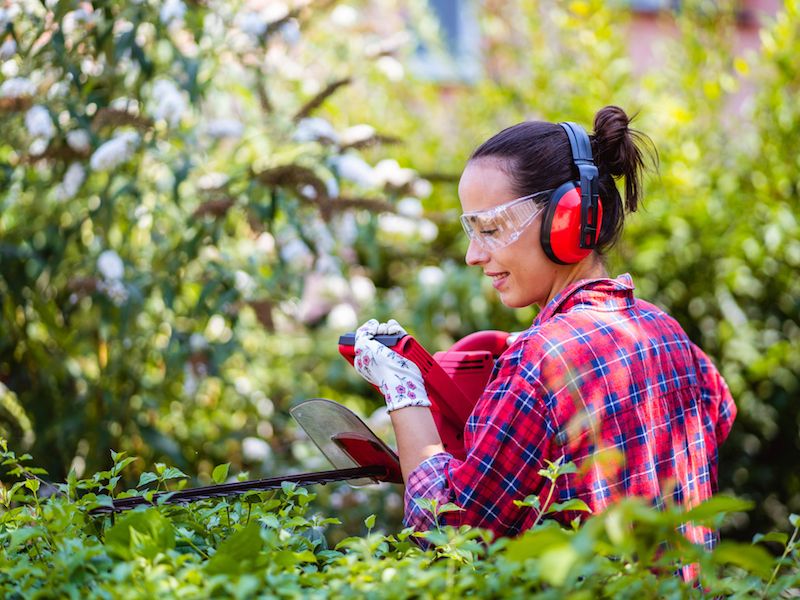
Eating right and safeguarding your hearing have some parallels. It sounds good, but not many of us have a very good concept of where to start. If there aren’t any apparent noise dangers and you don’t consider your daily environment to be particularly noisy, this is especially true. But your ears and senses can be stressed by day-to-day living, so practicing these hearing protection techniques can help safeguard your auditory acuity.
If you want to keep enjoying the sounds around you, you should do everything you can to impede down the impairment of your hearing.
Tip 1: Ear Protection You Can Wear
Using hearing protection is the most practical and basic way to safeguard your ears. This means that diminishing loud and dangerous sound is a basic step you should take.
For many people, this will mean utilizing ear protection when it’s needed. Hearing protection normally comes in two basic forms:
- Ear Muffs, which are put over the ears.
- Ear Plugs, which are put in the ear canal.
Neither form of hearing protection is inherently better than the other. There are benefits to each type. What’s important is that you pick some hearing protection that you feel comfortable wearing.
Tip 2: When Sound Gets Dangerous, be Aware of It
But how can you be sure when to wear hearing protection? Noise that is painful is usually considered harmful. But honestly, sounds can begin to damage your ears at a much lower level than you might anticipate. After only a couple hours, as an example, the sounds of traffic are enough to injure your ears. A vital step in protecting your hearing, then, is knowing when sound becomes dangerous.
The following threshold is when sound becomes harmful:
- 85 decibels (dB): After around two hours this level of sound is hazardous.This is the volume of sound you’d expect from a busy city street or your hairdryer.
- 95-100 dB: This is the typical volume of your earbuds or the level of farm equipment. This volume of noise becomes damaging after 15-20 minutes.
- Over 100 dB: In this situation, you can damage your hearing very quickly. Damage is done in about thirty seconds with sounds over this limit. For instance, jet engines and rock concerts will damage your ears in 30 seconds.
Tip 3: Turn Your Phone Into a Sound Meter
Now that we have a basic concept of what levels of noise may be harmful, we can take some steps to make sure we limit our exposure. The trick is that, once you’re out and about in the real world, it can be hard to determine what’s loud and what isn’t.
That’s where your smartphone can become a handy little tool. Sound meter apps exist for every type of smartphone.
In order to get an idea of what hazardous levels of noise actually sound like, use your sound meter to confirm the decibel level of everything you are hearing.
Tip 4: Monitor Your Volume Buttons
A smartphone with earbuds is commonly the way people listen to music these days. This sets up a risky situation for your hearing. Your hearing can be considerably harmed if you keep your earbuds too loud over a long period of time.
That’s why safeguarding your ears means keeping a focused eye on your volume management. You should not increase the volume in order to drown out noises somewhere else. And we suggest using apps or settings to ensure that your volume never unintentionally become hazardously high.
Earbud use can become a negative feedback loop if your hearing starts to wane; in order to make up for your declining hearing, you may find yourself continuously rising the volume of your earbuds, doing more damage to your ears in the process.
Tip 5: Get Your Hearing Checked
You may think of a hearing test as something you schedule when your hearing has already begun to decline. Without a standard to compare results to, it’s not always easy to detect a problem in your hearing.
Generating data that can be used for both diagnostic applications and for treatment can best be accomplished by scheduling a hearing examination and screening. This will give you a little extra context for future hearing choices and ear protection.
Keep an Eye on Your Hearing
In an ideal world, protecting your ears would be something you could do constantly without any difficulty. But challenges are will always be there. So protect your ears when you can, as often as you can. You should also get your ears examined regularly. Hopefully, these tips will give you a good start.